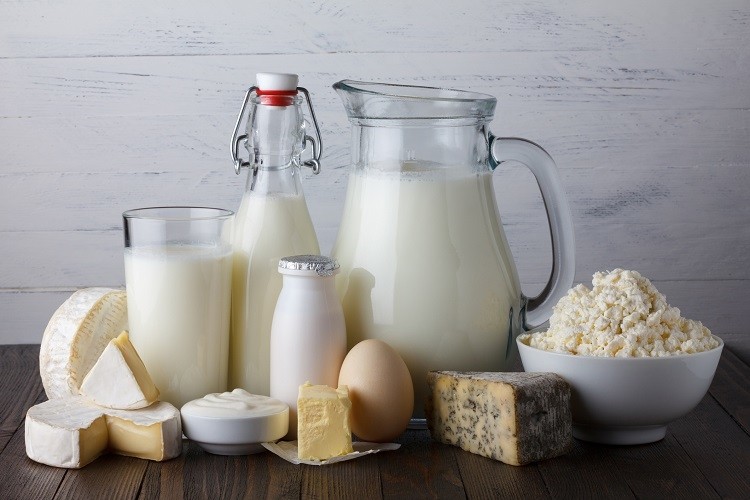Adding climate costs to the price tag: Researchers calculate the ‘true cost’ of meat, milk, and plant-based foods

Current price tags on dairy, animal- and plant-based foods do not reflect the environmental costs associated with their production. But if they did, what would the ‘true cost’ of these products be?
The agri-food industry is one of the principle emitters of greenhouse gases (GHGs). Globally, food and farming systems are thought to contribute up to 30% of the world’s GHG emissions.
However, environmental costs from these emissions are not considered in the pricing of food products, which scientists from Germany’s University of Augsburg say burdens other market participants, future generations, and the natural environment.
In a new study, researchers – led by Tobias Gaugler from the university’s Faculty of Mathematics, Natural Sciences and Technology – aim to determine the ‘true costs’ of foods by quantifying and monetizing GHG emissions from agriculture.
External cost differences ‘especially large’ between food categories
In their research, the scientists focused on food production in Germany only, suggesting that their methods could be applied to other countries as and when required.
To kickstart the quantification process, the researchers divided all foodstuffs into the broad categories of plant-based, animal-based, or dairy products.
From there, sub-categories in plant-based were created: vegetables, fruits, cereals, root crops, legumes and oilseed. In animal-based, the researchers categorised eggs, poultry, ruminants and pork, and in dairy, just milk. “Only milk is considered within the dairy products, as processing steps beyond the farmgate would be necessary to achieve other dairy products, such as cheese or butter,” they explained.
Findings revealed that external cost differences are ‘especially large’ between food categories. Perhaps unsurprisingly, animal products were found to be associated with the highest external costs ‘by far’. Next up was dairy, followed by plant-based products.
The study also divided production between organic and conventional farming practices. In plant-based and dairy, organic production methods were found to causer fewer emissions than conventional production: a 57% reduction in plant-based products, and 96% fewer emissions for dairy products.
The choice of farming system was found to have the largest effects in the production of animal-based foodstuff. “In this category, organic production causes 150% of emissions from conventional production,” the researchers noted, but stressed that emissions from land-use change (LUC) had not yet been included in the underlying data and calculation. LUC emissions are thought to change the results for animal-based foodstuff ‘dramatically’.
Incorporating climate costs into the price tag
So how much more would animal-based, plant-based and dairy products cost if environmental emissions associated with their production was factored in?
According to the study’s findings, incorporating climate costs into the price of meat products would increase price tags by 146%. Dairy products would have to be 91% more expensive than current pricing, and fruit and vegetables 25% more expensive.
When compared to organic production methods for the same categories, organic meat would be priced 71% higher and organic dairy 40% higher. Organic fruit and vegetables would be priced just 6% higher.
“We ourselves were surprised by the big difference between the food groups investigated and the resulting mispricing of animal-based food products in particular,” noted study lead author Tobias Gaugler.
“If these market mispricing errors were to cease to exist or at least be reduced, this would also have a major impact on the demand for food. A food that becomes significantly more expensive will also be much less in demand,” added study co-author Amelie Michalke.
Potentially implications for land-use and food waste
The results suggest prices of animal-based products – both meat and dairy – should be increased to a ‘significantly larger extent’ to that of plant-based products.
This could have significant implications for land-use, the researchers noted: “The presumed consequential decline of animal-based product consumption would free an enormous landmass currently used for feed production.” It would also allow for the expansions of organic agriculture, which was largely shown in the study to have fewer environmental costs, they added.
The study authors also noted that the internalisation of external costs would likely result in lower levels of food waste – particularly in the household – as ‘appreciation for food would rise with its increased monetary value’. “Thereby, further positive effects on efficiency and the environmental burden of food production would be achieved.”
Read also
Wheat in Southern Brazil Impacted by Dry Weather and Frosts
Oilseed Industry. Leaders and Strategies in the Times of a Great Change
Black Sea & Danube Region: Oilseed and Vegoil Markets Within Ongoing Transfor...
Serbia. The drought will cause extremely high losses for farmers this year
2023/24 Safrinha Corn in Brazil 91% Harvested
Write to us
Our manager will contact you soon



